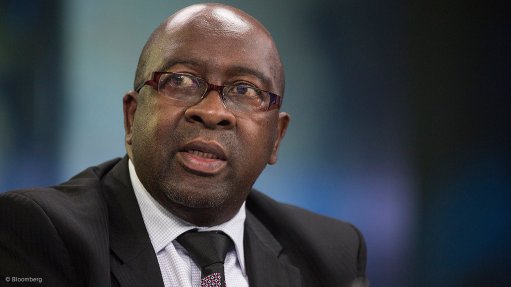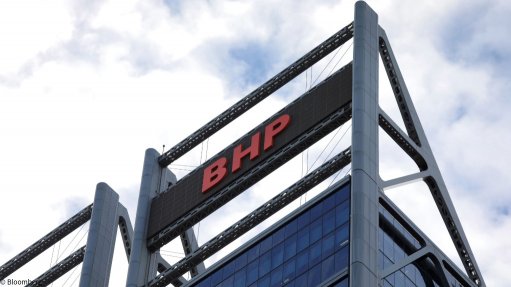Oil, gas profitable as transition deferred
Despite the global commitment to a green energy transition, the oil and gas industry is the most profitable industry, with a 20% financial investment decision (FID) rate, says global energy trade association Energy Industries Council (EIC) CEO Stuart Broadley.
The FID rate is expected to grow over the next two years, as there are megaprojects in the pipeline that “are close to receiving funding” because of underinvestment in the oil and gas infrastructure globally in the past ten years.
Therefore, he anticipates “catch-up investment” will occur, resulting in FID rates for oil and gas projects increasing even more.
In the EIC’s ‘Survive and Thrive 2023 Insight Report’, released in July, detailed interviews were conducted with leaders of member companies of the EIC to determine their preferred strategy for growth in the current market and gain insight into industry conditions.
The research has found that the majority of energy supply chain companies are struggling to find the volume and profitability of projects in the renewables sector to justify their further investment in the renewables sector and transition technologies.
“There’s just not enough business that allows them to say: ‘That’s now my core focus for the foreseeable future’,” says Broadley.
The report found that project activity worldwide is moving much further ahead in oil and gas, compared with projects in the renewables sector.
Further, oil and gas markets are the most profitable and, from an engineering scope, provide the most opportunity for innovation.
Broadley adds that Russia’s invasion of Ukraine has changed the political and the energy environment, resulting in energy security taking priority over the energy transition. As a result, energy transition and renewable-energy projects are not receiving enough prioritisation or funding.
Only 8% of the world’s fixed offshore wind projects are funded currently, according to the ‘Survive and Thrive’ report.
Broadley is concerned that several offshore wind developments rely on lower interest rates – with rising inflation and higher interest rates, it is likely that many projects will be postponed.
Although hydrogen has been a growing trend, only 3% of the world’s hydrogen projects are currently funded, while only 2% of carbon capture and utilisation projects, and 1% of floating offshore wind projects are being funded, he explains.
Broadley notes that while many supply chain companies in the energy sector are eager to join renewables projects, there are not enough projects, which results in increased competition and reduced pricing, which, in turn, can be damaging to businesses in the long term.
He emphasises that renewables projects cannot be pushed ahead without funding and governments are often unable to adequately fund or facilitate these projects, with limited budgets being directed towards renewable energy. This results in delays when having to approve projects.
Further, policies are also moving away, at least in the short term, from net-zero carbon dioxide emissions by 2050, as a result of governments’ prioritising energy security to ensure that companies can sustain production at a reliable scale to reduce the impact of a looming recession on business operations and the economy.
Broadley adds that energy transition projects must be more consistently approved by governments. For the energy transition to be successful, the projects then need to be funded sufficiently so that they meet the basic investment criteria.
The investment community is questioning the value of the renewables sector, in terms of having suitable returns on investment and enough volume to allocate significant green finance to those projects, he notes.
Net-Zero Jeopardy
There is a major gap between what policymakers say regarding net zero and what industry has to deal with in reality – termed ‘net-zero jeopardy’.
Policymakers continue to state their commitment to reaching their respective net-zero commitments, but there has not yet been significant progress on projects to help meet these commitments, says Broadley.
These commitments were made during the twenty-first session of the Conference of the Parties to the United Nations Framework Convention on Climate Change at the Paris Climate Change Conference in 2015 (COP 21), and updated at COP 26, held in Glasgow, Scotland, in 2021, with many countries agreeing to legally binding commitments.
However, businesses in the energy supply chain do not believe that it is possible to still meet these targets, while it is not economically feasible for businesses to wait indefinitely for renewable-energy projects, Broadley explains.
Therefore, policymakers need to address the possibility that they are at risk of missing their net-zero targets and discuss how to proceed, as well as identify potential avenues to realistically accelerate renewables and energy transition projects.
Broadley says nothing can be done to address the gap until policymakers begin addressing the issues that prevent renewables and energy transition projects from gaining significant traction.
Policymakers have to address many factors that have changed since COP 26, but as they continue to avoid addressing these evolving hurdles, the gap between what industry is dealing with and achieving net-zero targets widens.
Comments
Press Office
Announcements
What's On
Subscribe to improve your user experience...
Option 1 (equivalent of R125 a month):
Receive a weekly copy of Creamer Media's Engineering News & Mining Weekly magazine
(print copy for those in South Africa and e-magazine for those outside of South Africa)
Receive daily email newsletters
Access to full search results
Access archive of magazine back copies
Access to Projects in Progress
Access to ONE Research Report of your choice in PDF format
Option 2 (equivalent of R375 a month):
All benefits from Option 1
PLUS
Access to Creamer Media's Research Channel Africa for ALL Research Reports, in PDF format, on various industrial and mining sectors
including Electricity; Water; Energy Transition; Hydrogen; Roads, Rail and Ports; Coal; Gold; Platinum; Battery Metals; etc.
Already a subscriber?
Forgotten your password?
Receive weekly copy of Creamer Media's Engineering News & Mining Weekly magazine (print copy for those in South Africa and e-magazine for those outside of South Africa)
➕
Recieve daily email newsletters
➕
Access to full search results
➕
Access archive of magazine back copies
➕
Access to Projects in Progress
➕
Access to ONE Research Report of your choice in PDF format
RESEARCH CHANNEL AFRICA
R4500 (equivalent of R375 a month)
SUBSCRIBEAll benefits from Option 1
➕
Access to Creamer Media's Research Channel Africa for ALL Research Reports on various industrial and mining sectors, in PDF format, including on:
Electricity
➕
Water
➕
Energy Transition
➕
Hydrogen
➕
Roads, Rail and Ports
➕
Coal
➕
Gold
➕
Platinum
➕
Battery Metals
➕
etc.
Receive all benefits from Option 1 or Option 2 delivered to numerous people at your company
➕
Multiple User names and Passwords for simultaneous log-ins
➕
Intranet integration access to all in your organisation


















